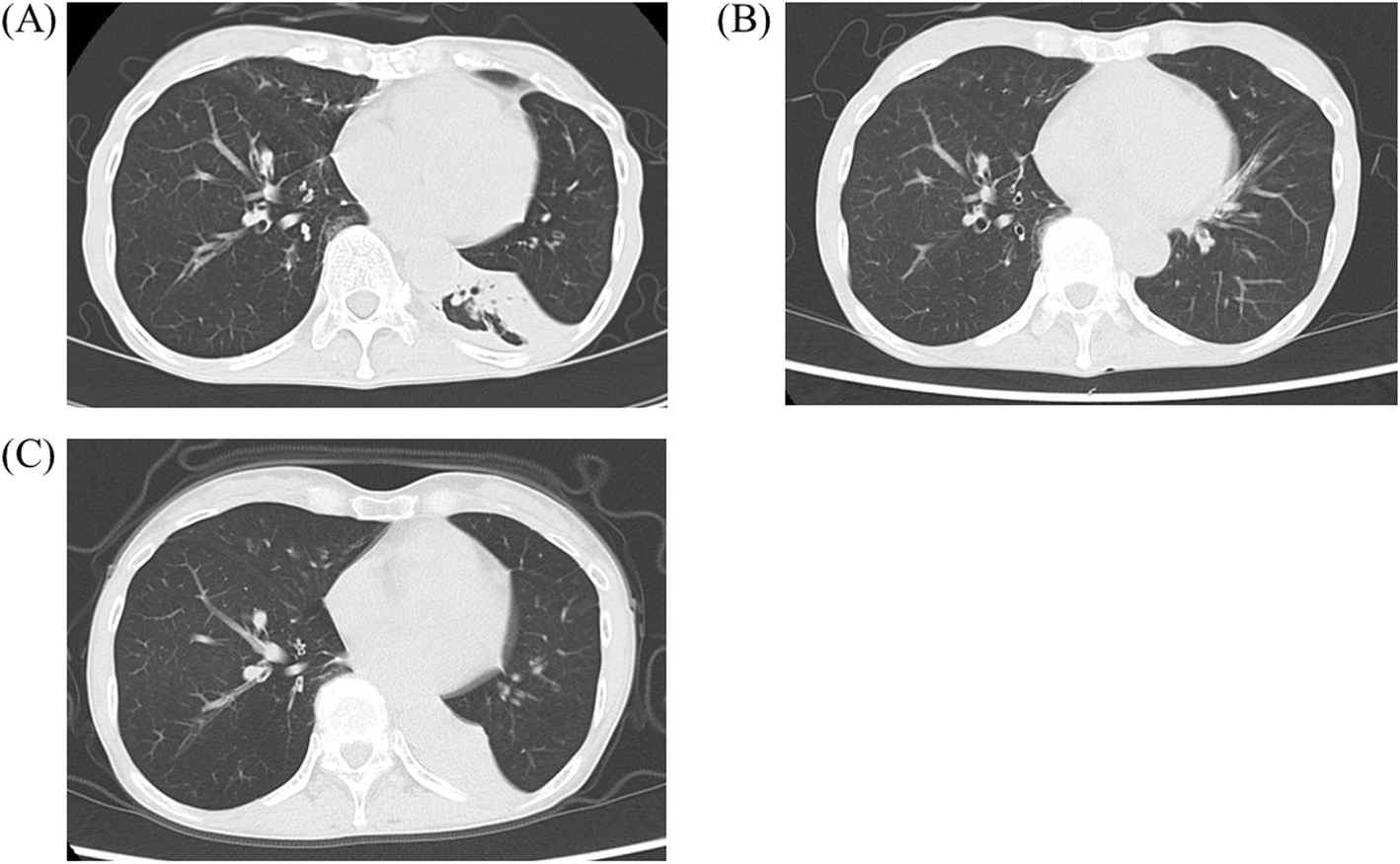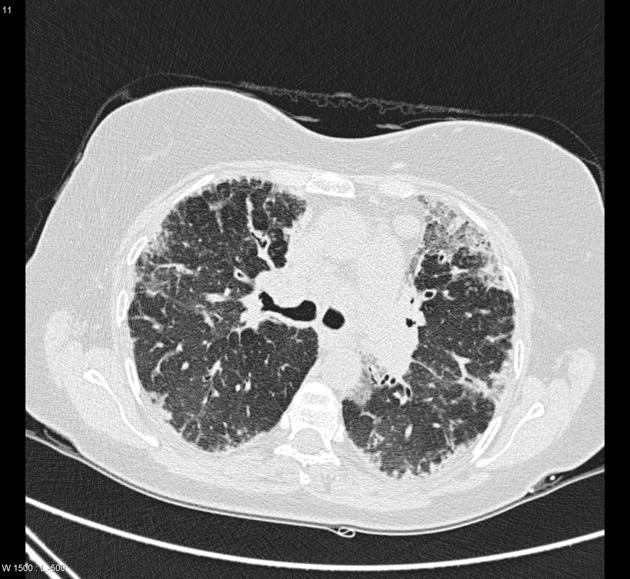amiodarone lung toxicity
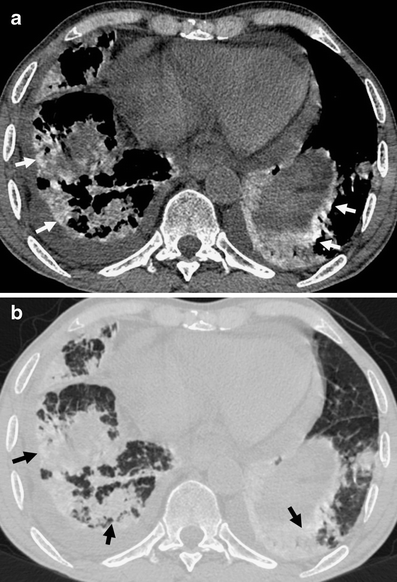
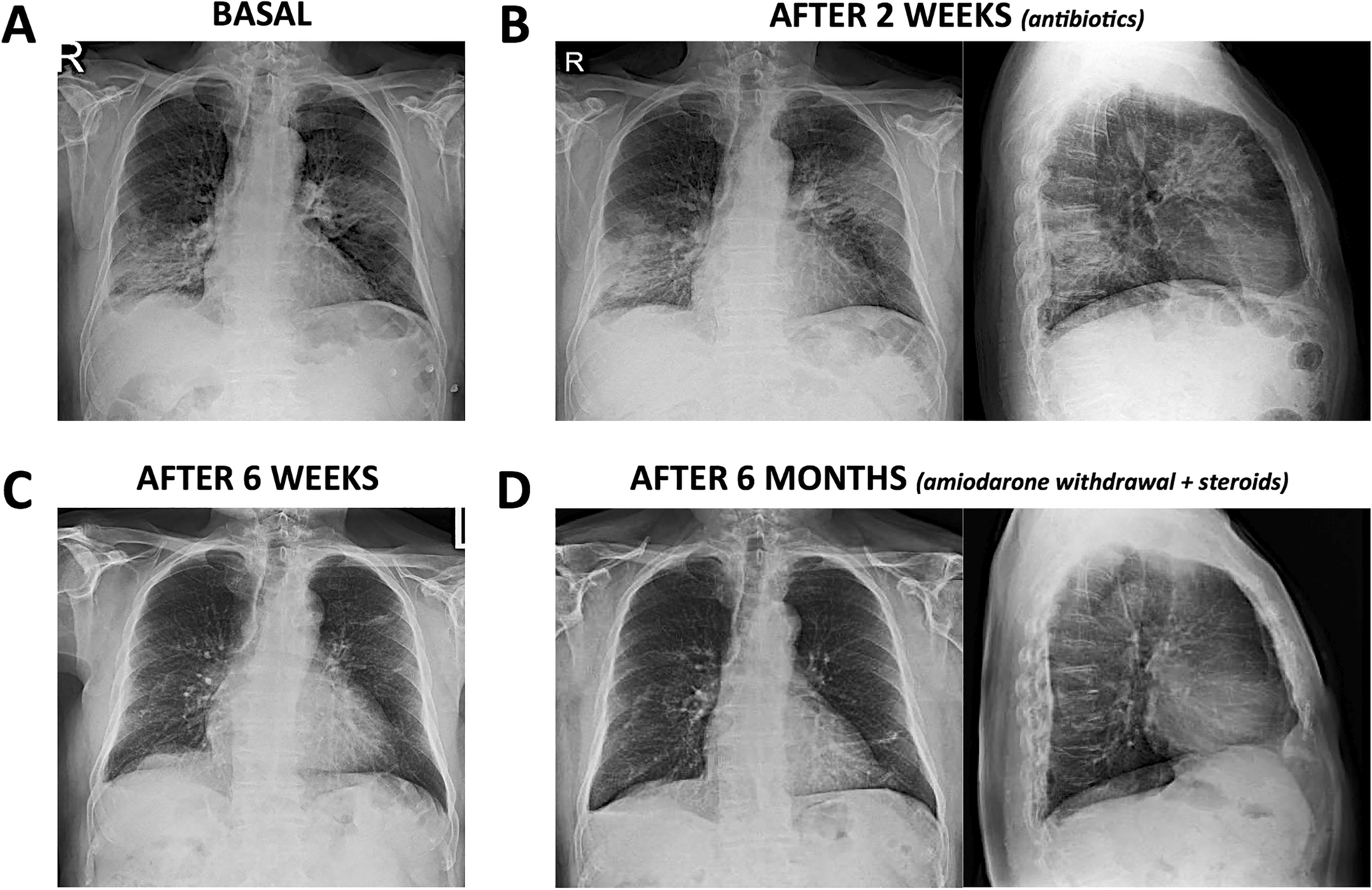
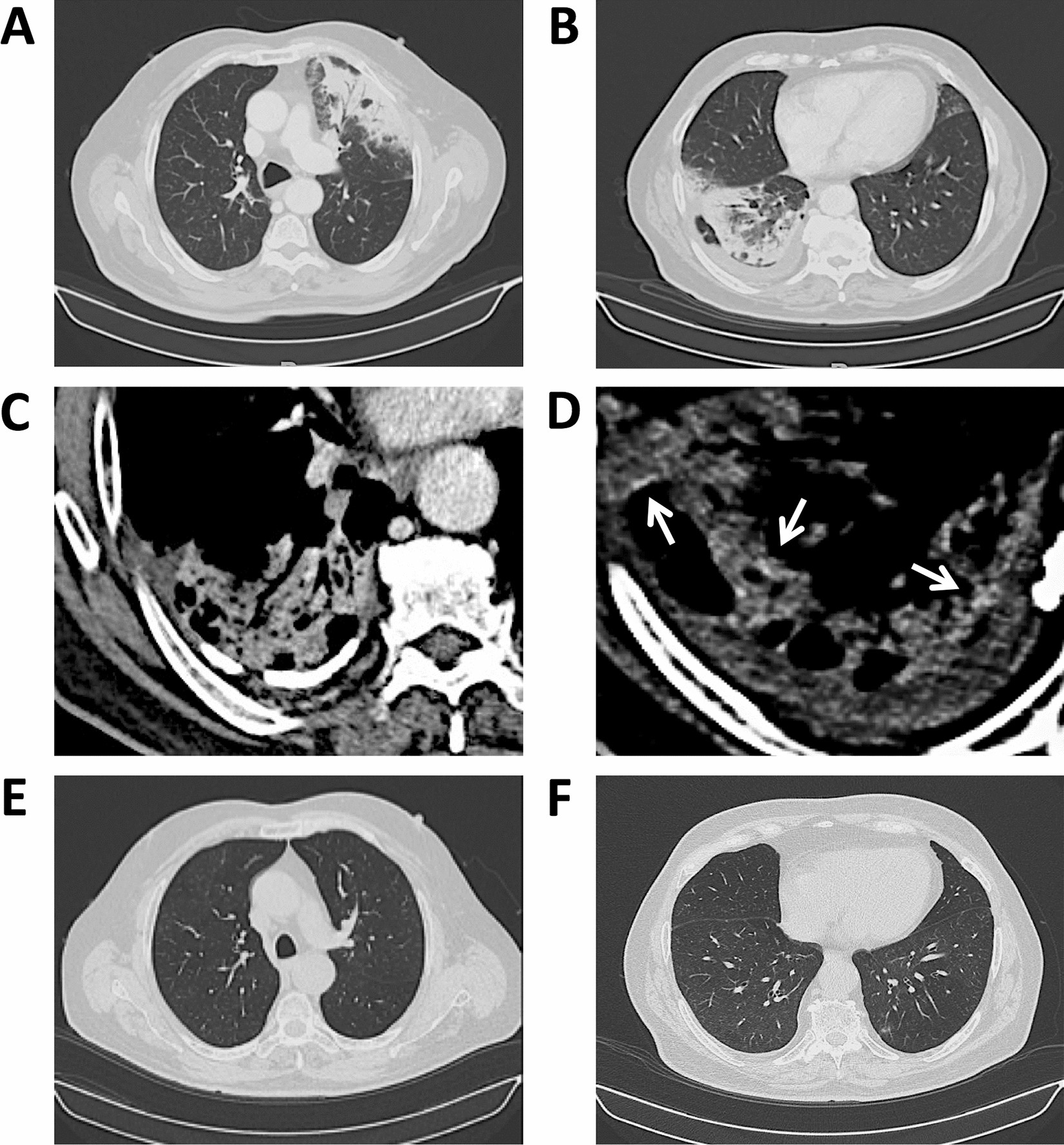
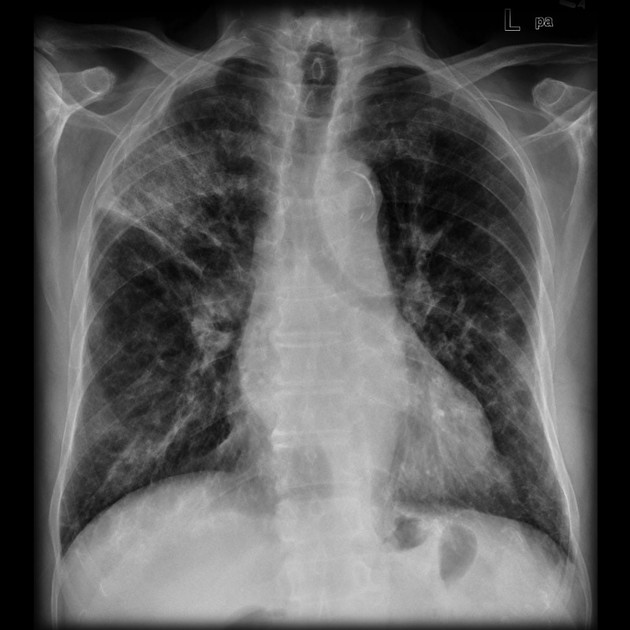

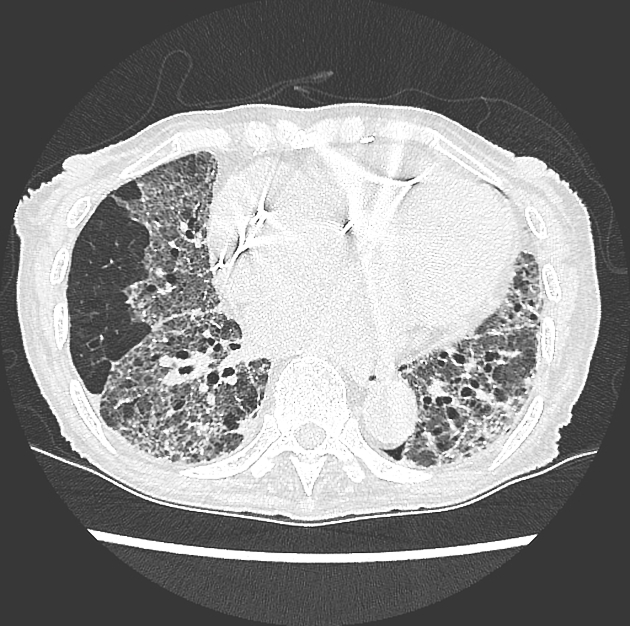
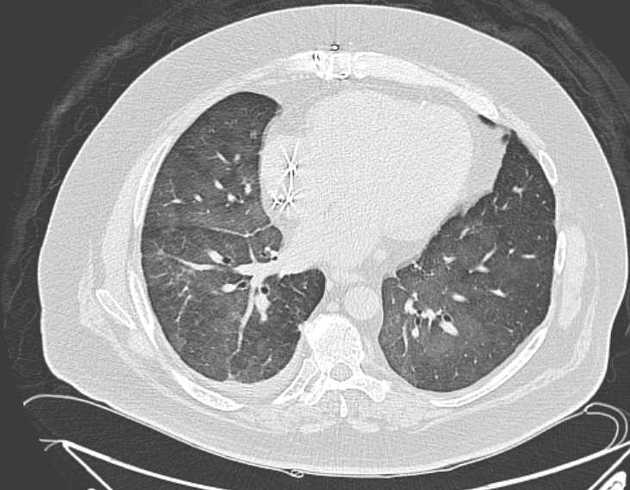
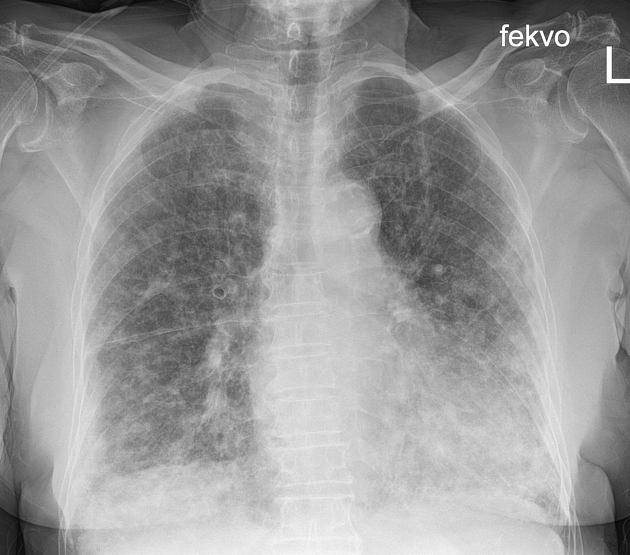
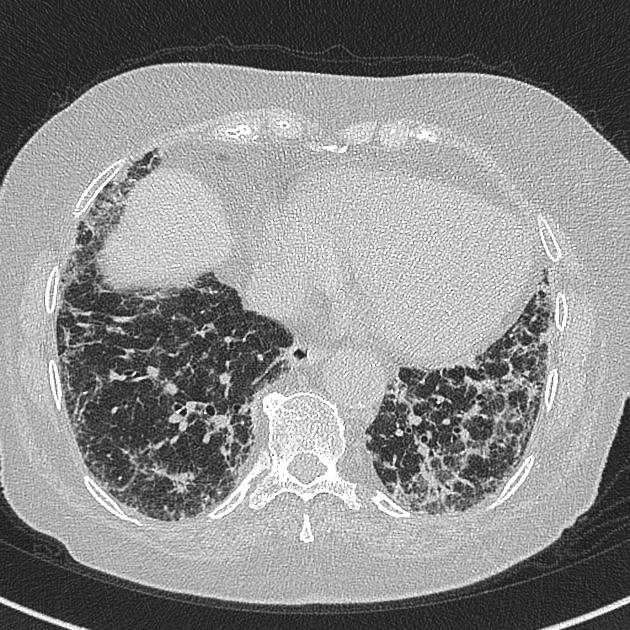
Amiodarone lung is an interstitial lung disease seen in patients being administered amiodarone and can manifest in a number of histopathologic patterns.
Epidemiology
The reported prevalence of pulmonary toxicity in patients receiving amiodarone is ~10% (range 2-18%) .
Patients are usually elderly and have been exposed to amiodarone, usually for at least six months, although there is a poor correlation with dosage or cumulative dose. Risk factors include :
- treatment longer than two months
- age over 60 years
- daily dose >400 mg
- antecedent lung disease or surgery
- prior angiographic investigations
Overall pulmonary toxicity occurs in 5-10% of treated patients .
Clinical presentation
Patients typically present with exertional dyspnea as the dominant symptom. Low-grade fever, anorexia, muscle weakness have also been reported . In approximately a third of patients, the presentation may mimic pulmonary infection .
Respiratory function tests are usually abnormal with a restrictive pattern on spirometry and decreased gas transfer . Hypoxemia is almost always present .
In some cases, tissue diagnosis is required to establish the diagnosis, although usually, the combination of appropriate clinical history and radiographic features suffice to guide therapy.
Pathology
Amiodarone hydrochloride is a triiodinated antiarrhythmic, comprised of 37% iodine by weight, which accumulates in type II pneumocytes . As is the case with other drug-induced pulmonary toxicity, amiodarone can cause a variety of histopathologic patterns including :
- chronic interstitial pneumonia: most common
- organizing pneumonia (OP)
- diffuse alveolar damage (DAD): AIP and even ARDS
A distinctive feature of amiodarone lung is the presence of foamy histiocytes which contain intracytoplasmic osmiophilic lamellar bodies. However, this feature is also seen in patients with amiodarone exposure and no evidence of toxicity.
Radiographic features
There are two main patterns of involvement, which may co-exist.
Plain radiograph
Appearances on chest radiography are non-specific, typically consisting of:
- peripheral areas of consolidation
- upper lobe predominance
- underlying interstitial disease
CT
As with other pulmonary diseases with an interstitial component, HRCT is the modality of choice. Changes are usually bilateral, asymmetrical and particularly prominent in the lung bases . Findings include:
- areas of consolidation
- peripheral
- often hyperdense c.f. muscle (on account of the iodine)
- patchy ground-glass opacities
- co-existing interstitial disease
- reticulonodular opacities
In addition, the liver (80% of cases) and sometimes the heart (20%) are high density . However, high hepatic and splenic attenuation is also seen in patients exposed to amiodarone in the absence of drug toxicity.
Nuclear medicine
gallium-67 scan: sensitive but nonspecific
Treatment and prognosis
Cessation of amiodarone and treatment with steroids arrests and often results in resolution of imaging findings over time . Overall mortality from amiodarone lung is <10% .
Differential diagnosis
Imaging differential considerations include:
- pulmonary eosinophilia
- patients with amiodarone lung have normal blood and tissue eosinophil counts
- also peripheral distribution
- pulmonary tuberculosis: cavitation common
- pulmonary fibrosis from other causes
- Churg-Strauss syndrome
- other hyperattenuating pulmonary abnormalities
Siehe auch:
- pulmonale Tuberkulose
- Lungenfibrose
- Churg-Strauss-Syndrom
- pulmonale Eosinophilie
- hyperattenuating pulmonary abnormalities
- Amiodaron
und weiter:

 Assoziationen und Differentialdiagnosen zu Amiodaronlunge:
Assoziationen und Differentialdiagnosen zu Amiodaronlunge:


